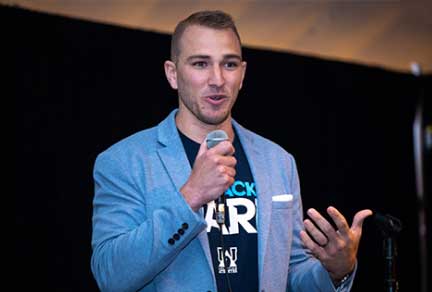Advancing your drug program
Updated June 10, 2025
With over four decades of experience, Parexel’s roots lie in regulatory consulting. Throughout this time, we have guided our customers through complex global regulations and helped them to adapt to evolving agency structures and processes.
In 2025, this focus includes navigating changes at US FDA, while ensuring continuity in drug development. We recommend eight key actions:
1. Prioritize timely submission of your IND application and new (or amended) protocol
To date, scientific review staff in the drugs and biologics centers have not been included in workforce reductions. Among our projects, we have not observed substantial or systematic changes in the timeliness of FDA actions on investigational and marketing applications for drug products, and on formal meetings with companies.
There is added assurance that FDA is maintaining its commitments to timelines specified under various User Fee Acts/Agreements (UFAs), which provide the necessary funding to support the review process. PDUFA VII is currently in effect (2023–2027), with FDA considering a restructuring before the end of September 2027. Public meetings have been announced for July to discuss the 2028–2032 PDUFA program.1,2
FDA has internal timelines for review of new protocols.
Proactive preparation of new IND applications and protocols for important clinical trials to receive prompt FDA input may prove advantageous in this rapidly changing environment.
2. Begin with FDA-approved approaches
Negotiation with FDA over the acceptability of novel methods routinely takes time. By utilizing existing FDA guidance and regulatory precedent for manufacturing processes, clinical trial endpoints and other protocol components, development can maintain momentum.
3. Continue to request FDA meetings
Particularly for innovative products or those addressing an unmet medical need, obtain documented FDA feedback and alignment to support continued development steps. Follow FDA meeting guidance for submissions and timelines, and focus on issues most important to inform future decision making.
Recent surveys by Endpoints3 and Jeffries4 show that delays to ongoing applications and processes are infrequent (11% and 6% respectively), which is directionally in line with typical FDA performance, in our experience.
4. Target expedited programs
Develop strategies to efficiently obtain data for fast track, breakthrough therapy, priority review and accelerated approval (AA). These designations indicate products with potential to address unmet medical needs for serious conditions, and afford FDA priority.
Recent comments by FDA Commissioner and CBER Director, Drs. Martin Makary and Vinay Prasad demonstrate a commitment to flexibility regarding the type of data needed to support approval of treatments for rare diseases.5,6
5. Ensure first-time right data
Submit accurate data from the outset to reduce the risk of unfavorable or delayed FDA action on applications, avoidable information requests during the review process, and potential compliance issues, such as Form 483 observations. Data discrepancies and inconsistencies can lead to extended review times.
6. Be inspection-ready at ex-US manufacturing facilities
FDA’s intent to expand the use of unannounced inspections7 aims to ensure that both domestic and foreign manufacturing receives the same level of regulatory oversight. Ex-US facilities should be real-time inspection-ready, with mock inspections key to prepare for FDA’s unannounced visits.
7. Leverage plans for global development
With the similarities in scientific evaluation of medical products, development that aligns with guidance from the EMA, MHRA, and other ICH countries will likely be consistent with FDA expectations. Seek early or concurrent international regulatory input to effectively manage global development.
8. Engage an experienced regulatory partner to critically evaluate your development plan
Experts, particularly former regulators who understand precedents and FDA rationale for decisions, can serve as a proxy for the agency’s perspectives. They can carefully assess your program for regulatory opportunities and pitfalls, and answer nuanced questions such as: “What is the outlook for FDA granting accelerated approval for the studied indication using the planned surrogate endpoint?” or “What is the body of evidence that FDA would require to support RMAT designation, and is the available data adequate?” This ensures robust, informed preparation ahead of meetings and submissions.
Next steps
With a team of 1,300+ regulatory specialists, including former regulators from agencies across the world, Parexel has the knowledge, insights, and technology-enabled processes to accelerate and streamline your drug development journey. With experience in more than 110 countries, we provide strategic regulatory advice, proactively identify and mitigate risks and navigate the ever-evolving regulatory landscape – including managing the implications of regulatory agency changes. Please get in touch, we’re always available for a conversation.
References
- International Affairs at the Annual meeting of the Food and Drug Law Institute (FDLI). (2025, May 16). International Affairs at the Annual meeting. [Conference presentation].
- Regulatory Affairs Professional Society (RAPS). (2025, May 19). FDA deputy commissioner hints at potential changes to PDUFA. https://www.raps.org/news-and-articles/news-articles/2025/5/fda-deputy-commissioner-hints-at-potential-changes
- Endpoints News. (2025, May 20). Endpoints 100 biotech survey: Welcome to the summer of biotech’s discontent. https://endpoints.news/endpoints-100-biotech-survey-welcome-to-the-summer-of-biotechs-discontent/
- Jefferies Research. (2025, May 9). [Research report]. No URL available.
- Endpoints News. (2025, June 3). FDA's Vinay Prasad says he will 'rapidly' push forward rare disease advances. FDA’s Vinay Prasad says he will ‘rapidly’ push forward rare disease advances
- BioSpace. (2025, April 21). Makary Discusses Expedited Rare Disease Approvals Pathway, ‘Public Distrust’ in New Interview. https://www.biospace.com/policy/makary-discusses-expedited-rare-disease-approvals-pathway-public-distrust-in-new-interview
- U.S. Food and Drug Administration. (2025, May 6). FDA Announces Expanded Use of Unannounced Inspections at Foreign Manufacturing Facilities. https://www.fda.gov/news-events/press-announcements/fda-announces-expanded-use-unannounced-inspections-foreign-manufacturing-facilities
Explore insights
Blog
Biosimilar reference medicinal product (RMP) regulatory requirements: China, US and EU comparison
Dec 20, 2024
Blog
Accelerated approval: Navigating FDA’s recent guidance and confirmatory trial considerations
Mar 6, 2025
Blog
How to maintain EU-CTR compliance for studies after slim transition
Dec 10, 2024
Webinar
Navigating Clinical Trials in Japan: From Regulatory Strategy to Operational Success
Mar 28, 2025
Blog
The future of drug development: Leveraging EMA support for use of alternative nonclinical approaches
Jun 6, 2024
Our experts
Paul Bridges, Ph.D.
President, Consulting
Katie Connelly
Senior Vice President, Global Head of Regulatory Affairs
Mwango Kashoki, M.D., M.P.H.
Senior Vice President, Global Head of Regulatory Strategy
Sinan Sarac, M.D., Ph.D., M.Sc.
Senior Vice President, Head of Oncology Europe, Regulatory Consulting
Mingping Zhang
Vice President, Regulatory Consulting
Yoshitaka Ando
Senior Director, Head of Regulatory & Access, Japan
Our experts
Paul Bridges, Ph.D.
President, Consulting
Katie Connelly
Senior Vice President, Global Head of Regulatory Affairs
Mwango Kashoki, M.D., M.P.H.
Senior Vice President, Global Head of Regulatory Strategy
Sinan Sarac, M.D., Ph.D., M.Sc.
Senior Vice President, Head of Oncology Europe, Regulatory Consulting
Mingping Zhang
Vice President, Regulatory Consulting
Yoshitaka Ando
Senior Director, Head of Regulatory & Access, Japan



